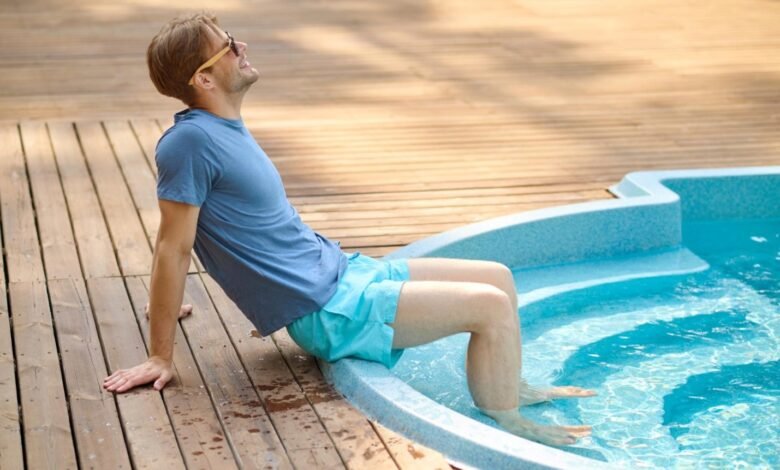The Science Behind the Benefits of Water Therapy: Everything About Cold Plunge You’ve Ever Wanted to Know

Water therapy, particularly cold plunge therapy, has taken the wellness world by storm. But don’t think it’s just a practice for elite athletes; everyday people can also enjoy the myriad benefits of icy waters. So what exactly makes cold plunging so effective? Let’s explore the science behind this interesting practice.
What is Cold Plunge Therapy?
Cold plunge therapy means you’re immersing your body in cold water, typically between 45°F (7°C) and 59°F (15°C), for a short period. This practice has its roots in ancient cultures, as it was used in Roman baths, but it’s also a part of Nordic traditions, and Japanese culture – Mizuburo is a cold bath that is found in an onsen.
Today, cold water therapy is celebrated for its ability to help physical recovery, improve your mental state, and overall well-being. Fans of icy waters also complement their cold plunge sessions with time in hot tubs, as creating a contrast therapy effect may further increase its benefits.
See also: The Benefits of Nora Recessed Lighting for Modern Home Design
The Science Behind Cold Water Therapy
The benefits of cold plunges can be traced to physiological and biochemical processes triggered by the sudden exposure to cold temperatures.
When exposed to cold water, blood vessels constrict, reducing blood flow to the extremities. When you exit the water, the vessels dilate, increasing circulation and delivering oxygen and nutrients to your tissues.
Cold water immersion induces a hormonal response in your body, as it stimulates the release of norepinephrine. This hormone improves focus, attention, and mood but can also help reduce inflammation in the body.
Because of the cold temperature, your body generates heat, which increases your metabolic activity. This can enhance calorie burning and may positively impact insulin sensitivity over time. Don’t forget about the anti-inflammatory effects: regular cold exposure could help those suffering from chronic inflammation, such as arthritis, heart disease, and diabetes.
Proven Benefits of Cold Plunge Therapy
You can see now that cold water therapy isn’t just a myth, as it has several proven benefits. For athletes, cold plunges are often used to recover from intense workouts. By reducing inflammation and improving circulation, it can help them alleviate muscle soreness.
But a cold plunge is not only for those who spend their days in the gym: this method activates the sympathetic nervous system, which releases endorphins—the body’s natural feel-good chemicals. It could also reduce symptoms of depression and anxiety by creating a sense of accomplishment and resilience, but the shock of cold water also wakes up the body and mind, much like a strong cup of coffee. This energy boost is all natural and can last for hours, so what better way to start your day?
How to Get Started
If you’re new to cold plunges, the thought of exposing yourself to icy water can be intimidating. However, with the right approach, you can ease into the practice–and enjoy its benefits safely.
The most important thing is to start gradually. Begin with shorter durations and slightly warmer water, around 59°F (15°C). As your body gets used to the sensation, you can lower the temperature and extend the time spent in the water. Controlled breathing is also essential to managing the initial shock of cold water. Take deep, steady breaths, for they can help you calm down and make the experience more bearable.
When starting, limit your sessions to 2–3 minutes. As you become more comfortable, you can gradually extend this to 5-10 minutes–it’s about consistency rather than duration. Last but not least, listen to your own body; your safety comes first, so always exit the water immediately if you feel lightheaded or experience severe discomfort.
Dive Right In!
Cold plunge therapy is more than just a wellness trend—it’s a practice with many benefits proven by science. If you’re looking to boost recovery, improve mental clarity, or enhance overall health, a few minutes in icy water might be the refreshing solution you need. If you’re up to it, complete your sessions with some time in hot tubs so you can further improve the beneficial effects of your cold plunge.
Start small, stay consistent, and prepare to enjoy the rewards of this invigorating therapy.





